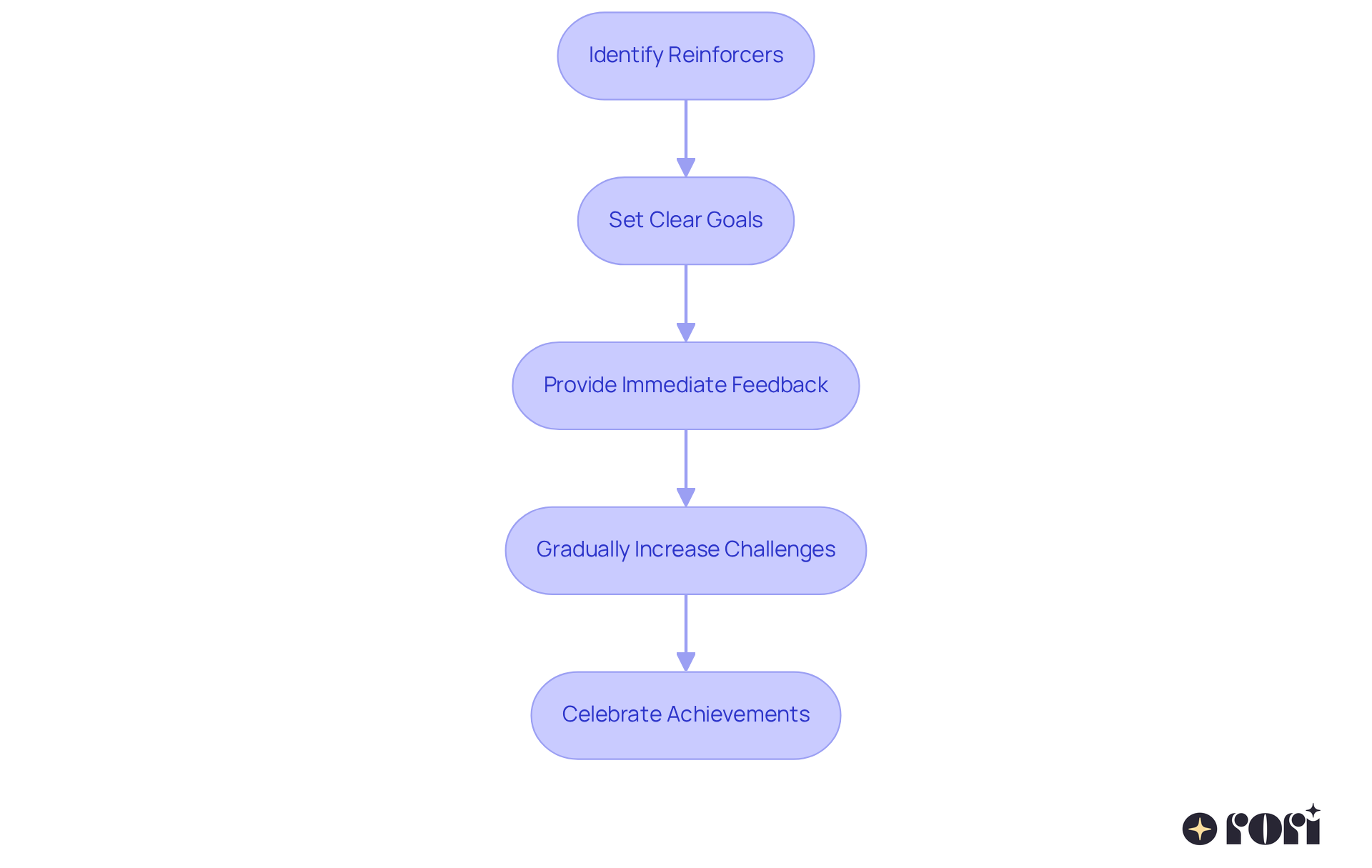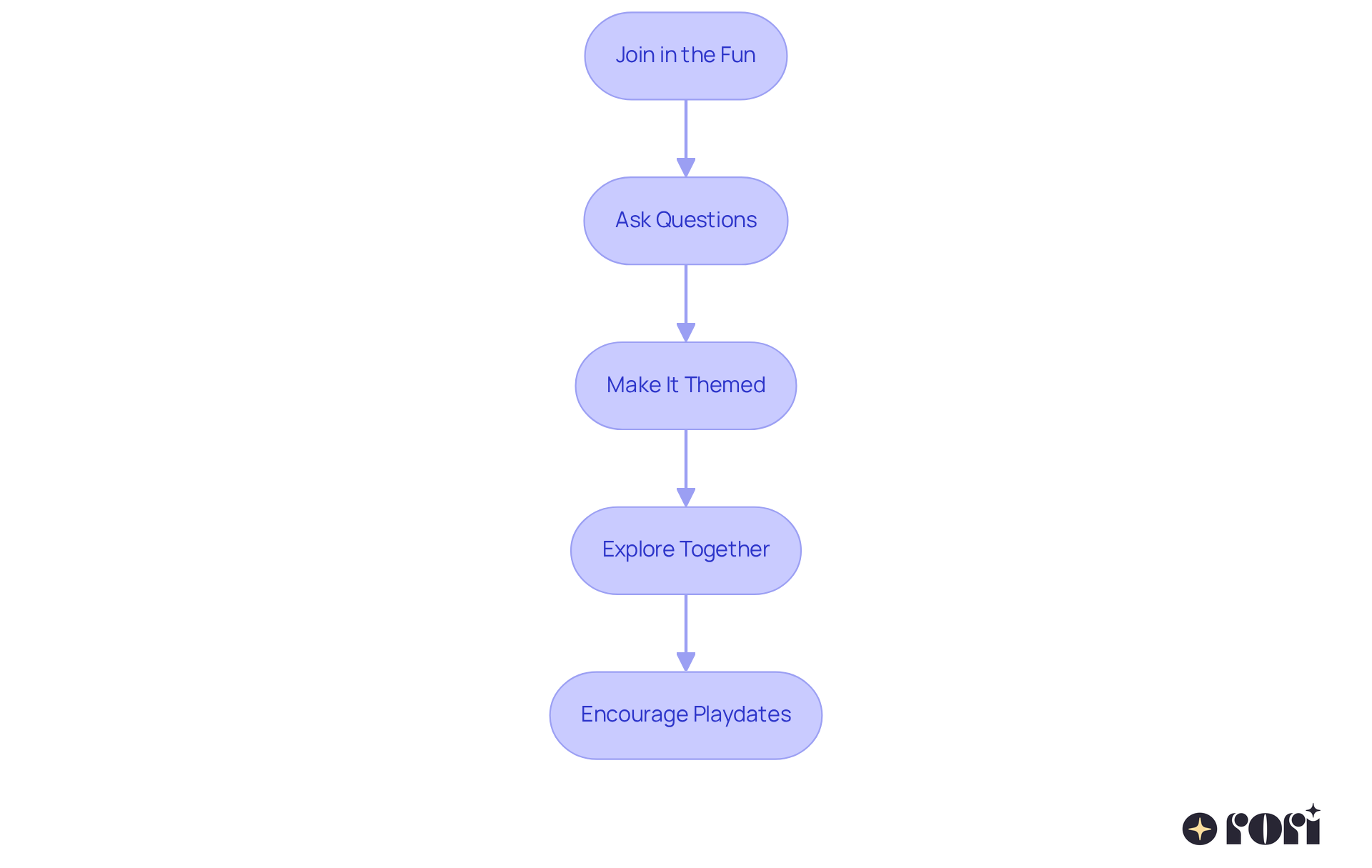Creating a nurturing environment for children with autism is so important for fostering their unique interests and enhancing their overall development. By understanding the intricacies of autism spectrum disorder, caregivers can truly tap into the potential within these children, turning their passions into powerful learning tools.
But how can parents effectively create a supportive atmosphere that not only meets these needs but also encourages exploration and growth? 🤔 This article dives into practical steps that empower caregivers to build a structured, safe, and engaging environment for children with autism, paving the way for their success.
Let’s explore this together!
Creating a nurturing environment for kids with autism is essential for creating a supportive environment for children with autism to explore their interests, as it involves understanding the autism spectrum and how it shapes a child's interests. Kids with autism often have intense passions that can be fantastic tools for learning and engagement. Let’s dive into some key steps to enhance your approach:
Learn About Autism: Start by getting to know the characteristics of autism spectrum disorder (ASD). Resources from the CDC and Autism Speaks are great places to find insights into how ASD affects communication, behavior, and social skills. Did you know that in 2022, the prevalence of ASD among 8-year-olds was reported at 3.2%? This really highlights the need for awareness and understanding.
Watch Your Child: Pay attention to what grabs your child's interest. Whether it’s trains, animals, or a favorite TV show, these passions can open doors to learning and social interaction. Research shows that kids with ASD often have specific interests that can be used to encourage engagement.
Incorporate Their Interests: Use your child's passions to create activities that promote learning. For instance, if they love dinosaurs, try adding dinosaur-themed books, games, or educational videos to their routine. This not only makes learning fun but also focuses on creating a supportive environment for children with autism to explore their interests in a positive way.
Talk Openly: Encourage open conversations about your child's passions. Ask them what they enjoy and why. This not only validates their feelings but also boosts their communication skills, creating a supportive environment where they feel understood.
By understanding autism and its influence on interests, you can contribute to creating a supportive environment for children with autism to explore their interests, which helps your child flourish. Let’s explore this journey together!

Creating a structured and safe environment for your little ones can feel like a big task, but it’s all about a few key strategies that can make a world of difference:
Set Clear Routines: Establishing daily routines for things like waking up, meals, and bedtime is super important. When kids know what to expect, it helps them feel safe and secure. In fact, studies show that kids with autism who stick to structured routines are part of creating a supportive environment for children with autism to explore their interests, which often results in less anxiety and better emotional health.
Organize the Space: Think about designating specific areas for different activities, like a cozy reading nook or a fun play zone. This way, kids can easily find where to go for what they need, boosting their confidence as they navigate their surroundings. Plus, a well-organized space can help cut down on sensory distractions, creating a calmer atmosphere.
Utilize Visual Aids: Visual schedules can be a game-changer! They help kids understand what’s coming next and make transitions smoother. Whether it’s charts or picture schedules, these tools can really enhance predictability, reduce anxiety, and encourage independence-making them invaluable in autism therapy.
Create a Safe Space: It’s crucial to ensure that your environment is free from hazards and encourages exploration. Think about sensory needs, too-calming tools like weighted blankets or noise-canceling headphones can make a big difference. A safe and reliable setting is essential for creating a supportive environment for children with autism to explore their interests, allowing kids to feel secure, which is key for their emotional and cognitive growth.
Incorporate Sensory-Friendly Elements: Soft lighting, comfy seating, and sensory toys can create a welcoming atmosphere that caters to sensory sensitivities. These elements contribute to creating a supportive environment for children with autism to explore their interests, helping them feel more at ease and encouraging their participation in daily activities.
By creating a structured and secure environment, you’re laying down a solid foundation that supports your child’s emotional and behavioral needs. This ultimately helps them thrive! Let’s explore this together and see how these strategies can work for you!

Encouraging exploration through positive reinforcement can be a game changer for parents! Here’s how you can make it work:
Identify Reinforcers: First things first, find out what really motivates your little one. Is it praise, stickers, extra playtime, or maybe a favorite snack? Knowing what they love is key to effective reinforcement.
Set Clear Goals: Next, let’s define some specific behaviors or activities to encourage. For example, if you want your child to try new foods, aim for them to taste one new item each week. This way, you’re tailoring goals to fit their unique needs, making it more personal and effective.
Provide Immediate Feedback: When your child engages in the desired behavior, give them immediate positive reinforcement. A simple, "Great job trying that new food!" or a small reward can really reinforce the connection between their actions and positive outcomes. Caregivers who understand ABA principles can make informed choices that positively impact their child’s progress.
Gradually Increase Challenges: As your little one gets more comfortable, it’s time to introduce new challenges. If they love building with blocks, encourage them to create a specific structure. This not only fosters growth but also boosts their confidence. It’s all about keeping things adaptive and responsive to their evolving needs.
Celebrate Achievements: Don’t forget to celebrate both the small wins and the big ones! This practice not only builds your child’s confidence but also strengthens their eagerness to explore and try new things. Research shows that positive reinforcement can lead to impressive improvements-communication skills can improve by 75%, social interactions by 80%, and daily living skills by 70%! By empowering caregivers through education, we can enhance their ability to support their child’s development, leading to better behavioral outcomes.
By implementing these strategies, you can focus on creating a supportive environment for children with autism to explore their interests, which will ultimately enhance your child’s development. Let’s explore this together!

To effectively engage with your child's interests, let’s explore some simple steps together:
Join in the Fun: Get involved in activities your child loves! If they enjoy drawing, grab some crayons and create art side by side. This shared experience not only strengthens your bond but also opens up avenues for communication, making them feel secure and understood.
Ask Questions: Show genuine curiosity about what excites your kid. Try asking, "What do you like most about dinosaurs?" This encourages them to share their thoughts and feelings, boosting their communication skills.
Make It Themed: Bring your child’s passions into everyday life. If they’re fascinated by trains, use train-themed math problems or read train stories during storytime. This approach makes learning fun and keeps them engaged in a meaningful way.
Explore Together: Whenever you can, take your child to events that match their interests, like a science museum or a local zoo. These outings offer enriching experiences and chances for social interaction, which are key for developing social skills.
Encourage Playdates: Set up playdates or group activities with kids who share similar hobbies. This helps your child develop social skills in a relaxed environment, fostering teamwork and friendship.
By actively involving yourself in your child's interests, you’re not just supporting their growth; you’re also contributing to creating a supportive environment for children with autism to explore their interests and deepening your relationship. Together, you can focus on creating a supportive environment for children with autism to explore their interests while encouraging independence and exploration!

Creating a nurturing and supportive environment for children with autism is so important for their development and well-being. By understanding the unique traits of autism and tapping into a child's interests, caregivers can really enhance their learning experiences and emotional security. This journey is all about recognizing the need for structure and safety while also engaging with children's passions to encourage exploration and growth.
Key strategies to consider include:
Together, these steps help create a supportive environment where children with autism can truly thrive.
Ultimately, we can't underestimate the importance of fostering a supportive atmosphere. It empowers children with autism to explore their interests, boosts their emotional and behavioral development, and strengthens family connections. By committing to these practices, caregivers not only support their child's journey but also champion a more inclusive and understanding world for everyone on the autism spectrum. Let’s explore this together!
What is the importance of understanding autism in relation to children's interests?
Understanding autism is essential for creating a supportive environment that allows children with autism to explore their interests, which can enhance their learning and engagement.
Where can I find reliable information about autism spectrum disorder (ASD)?
Reliable information about ASD can be found through resources from the CDC and Autism Speaks, which provide insights into how autism affects communication, behavior, and social skills.
What was the reported prevalence of autism among 8-year-olds in 2022?
In 2022, the prevalence of autism among 8-year-olds was reported at 3.2%, highlighting the need for awareness and understanding.
How can I identify my child's interests?
Pay attention to what captures your child's attention, such as specific topics like trains or animals, as these passions can serve as tools for learning and social interaction.
How can I incorporate my child's interests into learning activities?
Use your child's passions to create engaging activities, such as adding themed books, games, or educational videos related to their interests, which makes learning enjoyable and supportive.
Why is it important to have open conversations about my child's interests?
Open conversations validate your child's feelings and boost their communication skills, fostering a supportive environment where they feel understood and encouraged to express themselves.
How does understanding autism help children flourish?
By understanding autism and its influence on interests, caregivers can create a nurturing environment that allows children with autism to explore their passions, contributing to their overall development and well-being.